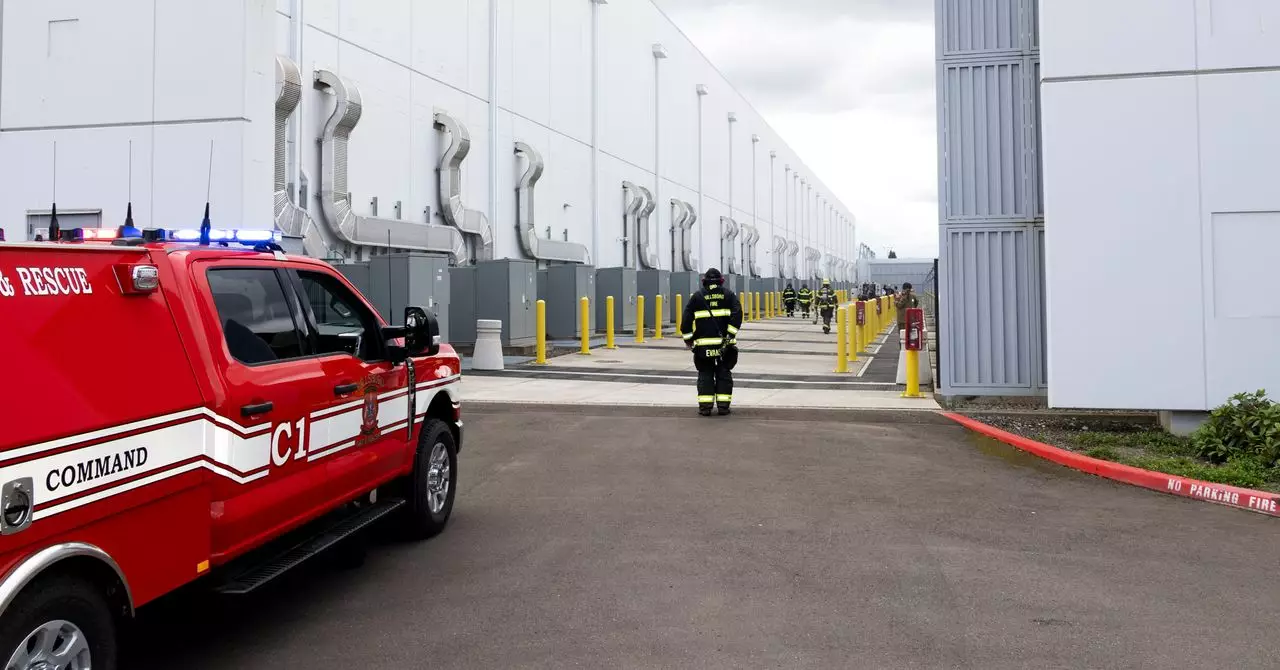In an era where digital dominance is the norm, the delicate backbone supporting our online lives—data centers—faces mounting safety challenges. A recent incident at a data center operated by Digital Realty in Hillsboro, Oregon, serves as a stark reminder that technological reliance doesn’t come without peril. The hours-long fire was initially presumed to stem from an electrical or mechanical fault within the power system, revealing vulnerabilities that are often underappreciated in managing vast digital ecosystems. As data centers evolve to meet skyrocketing demands—particularly driven by generative AI—the risks multiply, highlighting the urgent need for rigorous safety protocols that often lag behind technological advancements.
This event underscores a troubling paradox: the very elements that keep our data safe—power supplies, batteries, cooling systems—can also be sources of catastrophic failure. While fires in data centers are rare relative to the thousands operating worldwide, even a single incident exposes fundamental weaknesses in infrastructure resilience. The incident’s specifics, involving a Schneider Electric UPS cabinet, reveal how complex electrical components—if not carefully monitored and maintained—can become ticking time bombs. As data centers grow in size and sophistication, so do their inherent vulnerabilities, demanding a reevaluation of safety standards and innovation.
Electrical Failures: The Underlying Catalyst
The Hillsboro fire investigation pointed toward an electrical or mechanical failure inside the UPS system as the plausible trigger. These uninterruptible power supplies are designed to act as lifelines during outages, ensuring continuous electricity. Yet, their complexity—housing large battery packs, electronic circuits, and cooling modules—makes them susceptible to failure modes that can ignite electrical fires.
Experts like Shaolei Ren from UC Riverside have highlighted that batteries similar to those in electric vehicles are often involved in such fires. These components are inherently vulnerable if cooling becomes inadequate or if there’s an overload. The investigation’s inability to identify a definitive ignition source speaks to the complexity and difficulty in diagnosing failures in sophisticated electrical systems. It suggests that even in meticulously engineered systems, hidden flaws can escalate rapidly, especially when the demand for power is intense and continual.
Moving forward, data center operators must recognize that electrical failure is not merely a maintenance issue but a systemic vulnerability requiring proactive design, rigorous testing, and real-time monitoring. The incident reveals that safety protocols focusing solely on hardware inspection are insufficient; comprehensive strategies incorporating predictive analytics and fire prevention are of utmost urgency.
The Illusion of Safety and the Need for Innovation
The widespread assumption is that advanced systems and robust materials shield data centers from fires, but the recent events expose a dangerous complacency. The fire department’s initial suspicion of lithium-ion batteries being involved underscores how interconnected and complex the safety environment is. Lithium-ion batteries, while common and effective, are notorious for thermal runaway—an uncontrollable chain reaction leading to fires—yet they were ruled out in this case. Nonetheless, the incident’s core source—static electrical hardware—remains a ticking time bomb.
Digital Realty’s response—acknowledging an electrical cause and promising improvements—sounds reassuring but falls short on transparency. The industry as a whole needs to confront a harsh reality: existing safety standards are insufficient for the unique risks posed by high-capacity, AI-driven data centers. As these facilities become larger and more powerful, the need for redesigned cooling systems, safer battery technologies, and innovative fire suppression methods becomes non-negotiable.
This event serves as a call to action for the industry to prioritize safety as fervently as capacity and speed. It’s not enough to react when disasters occur; preventive, cutting-edge solutions—such as advanced fire detection sensors, smarter load balancing, and innovative battery chemistries—must become the norm.
Understanding the Broader Implications
Beyond technical failures, the Hillsboro fire highlights a cultural issue within the data center industry: complacency in risk management. As the digital economy accelerates, the pressure to maintain uninterrupted service leaves little room for rigorous safety overhauls. However, this incident demonstrates that cutting corners or neglecting cooling and electrical system health can lead to costly and damaging consequences.
Furthermore, the potential financial loss—estimated at $260,000—might seem trivial compared to the societal impact of widespread data outages. This narrow focus on immediate costs ignores the broader implications of data center fires, which can disrupt entire industries, compromise national security, and erode public trust in digital infrastructure. These risks demand a paradigm shift: viewing safety not as a secondary priority but as an integral component of operational excellence.
As artificial intelligence, machine learning, and data analytics become more deeply embedded in our lives, the infrastructure supporting them must evolve to meet these new demands. The incident in Oregon serves as a sobering reminder that safety engineering must keep pace with technological innovation, not trail behind it. Only through comprehensive redesign and unwavering vigilance can the industry hope to prevent the next disaster—one that could undermine our collective digital future.

